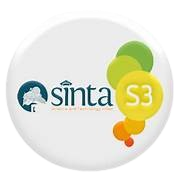Aggressiveness Level of Martial Arts Participants in Children
DOI:
https://doi.org/10.15294/peshr.v13i3.9533Keywords:
Aggressiveness ; Martial Arts; ChildrenAbstract
This study aims to determine the existence of martial arts concerning the level of aggressiveness in children. This study used quantitative methods with a comparative ex post facto causal design. The population in this study is children aged 10-12 years who live in West Java with categories of martial arts participants including taekwondo, pencak silat, and karate and the non-martial arts category. The study sample amounted to 118 from each group. Sampling techniques using purposive sampling by determining research needs criteria. The data collection technique uses a questionnaire totaling 29 questions with 4 components of aggressiveness, namely: physical aggressiveness, verbal aggressiveness, anger, and hostility. Data analysis techniques use SPSS by conducting descriptive statistical tests, normality tests, homogeneity tests, and Wilcoxon tests. Wilcoxon test results obtained significance values (sig. 2-tailed) of 0.000 < 0.05, so H0 was accepted. So, there is an average difference between martial arts participants and non-martial arts participants in terms of aggressiveness. There is a difference in the level of aggressiveness between martial arts participants and non-martial arts participants as evidenced by the average score of pencak silat participants being relatively high compared to the average score of non-pencak silat participants. The type of aggressiveness that is greatest among martial arts participants is hostile aggressiveness and the type of martial arts that gives rise to the greatest hostile aggressiveness is pencak silat martial arts. This can be seen from the descriptive statistics of the average scores of the two groups which state that the highest aggressiveness in pencak silat participants is hostile attitudes.
